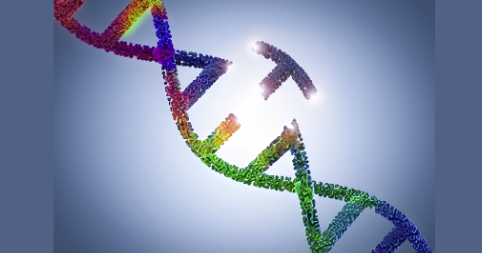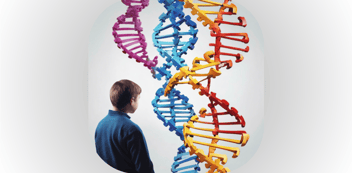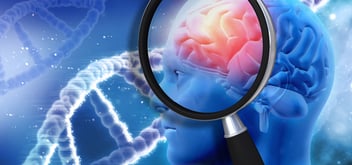Can modern life cause autism?
- Home
- Blog

Autism Spectrum Disorder (ASD) has been a growing concern, with rising prevalence rates over the past few decades. This trend raises a critical question: can modern life contribute to the development of autism? While the human genome has remained largely stable for thousands of years, the significant increase in autism cases suggests that external environmental factors may play a pivotal role. This blog explores the potential environmental contributors to autism, including xenobiotics, immune system dysregulation, and the impact of a rapidly changing environment.
The stability of the human genome
The human genome, our complete set of DNA, has been relatively stable for millennia. However, the incidence of autism has surged in recent decades. According to the Centers for Disease Control and Prevention (CDC), the prevalence of ASD in the United States has increased from 1 in 150 children in 2000 to 1 in 54 children in 2020. This rapid rise indicates that autism cannot be solely attributed to genetic factors. Instead, it suggests a significant influence of external environmental factors.
Immune system dysregulation and the FRAT test
The immune system plays a crucial role in maintaining overall health, including neurological health. However, modern diets, gut dysbiosis (an imbalance in gut microbiota), and exposure to xenobiotics can lead to immune system dysregulation. Autoimmune conditions have been on the rise, and dysregulation of the immune system can affect brain development and function. Research has shown that maternal immune activation during pregnancy can increase the risk of autism in offspring. Dysregulated immune responses may upregulate or downregulate autism-related genes, previously minimally expressed, leading to the manifestation of ASD.
In addition, 70-75% of children with ASD have an immune system that attacks folate receptors on the brain cells of children with autism. These antibodies prevent folate from entering the brain cells to repair DNA, manufacture DNA, regulate gene expression, produce critical neurotransmitters like serotonin, norepinephrine and dopamine, and produce glutathione a powerful antioxidant/anti-inflammatory molecule. In this video, watch the Mom of a child with autism explains the importance of having identified the presence of these antibodies in her child through a FRAT test, and the extraordinary positive response in her child after initiating treatment with leucovorin.
The role of xenobiotics
One of the critical environmental changes in the past century is the introduction and proliferation of xenobiotics—chemical substances foreign to our biological systems. These include pesticides, industrial chemicals, and various pollutants that were not present in significant quantities until the modern era. Research indicates that exposure to certain xenobiotics can disrupt neurological development and function. For example, a study published in Environmental Health Perspectives found a correlation between prenatal exposure to certain pesticides and an increased risk of autism. The rise in xenobiotic concentrations in our environment coincides with the increasing prevalence of autism, suggesting a potential link.
Reducing pesticide exposure, drinking water filtered by a reverse osmosis filtration system, eating organic where possible, and enhancing the activity of detoxification genes may lessen the effects of xenobiotics on brain function.
Infectious diseases
Newer infectious diseases and the changing landscape of microbial exposure may also play a role in the rise of autism. For instance, certain viral infections during pregnancy have been associated with an increased risk of autism in children. A study published in Molecular Psychiatry found that maternal infection and fever during pregnancy were linked to higher rates of autism in offspring. The interplay between infectious agents and the immune system could potentially trigger or exacerbate autism-related genetic expressions.
The impact of a rapidly changing environment
Modern life is characterized by rapid changes and high levels of environmental stimuli, which starkly contrast with the simpler, more stable environments of small towns and farms. This shift can influence gene expression through epigenetic mechanisms, which alter gene activity without changing the DNA sequence. The stress and demands of modern life can affect brain development and function. Studies have shown that chronic stress can lead to neuroinflammation, which is linked to neurodevelopmental disorders like autism.
Dr. Siddhartha Mukherjee, in his work on genetics, highlights that every "genetic illness" is essentially a mismatch between the organism and its environment. In the context of autism, this suggests that modern environmental changes may be creating conditions that trigger genetic predispositions to autism. Therefore, one of the best "medical treatments" could be to modify the environment to better suit the needs of individuals with autism.
Modifiable environmental factors
Several environmental factors known to contribute to or exacerbate autism are modifiable. Reducing exposure to harmful chemicals, drinking water filtered by reverse osmosis filtering systems, improving diet quality, promoting gut health, and minimizing stress can all have positive impacts. For instance, ensuring a diet rich in essential nutrients and free from harmful additives can support neurological health. Additionally, creating supportive and stress-free environments for children can help mitigate the impact of environmental stressors on brain development.
Autism: a condition of modern life?
Speculating whether autism is a condition of modern life that did not exist in simpler times is complex. While autism likely existed in the past, its prevalence may have been lower, or it may not have been recognized or diagnosed as it is today. The combination of genetic predisposition and modern environmental factors appears to contribute to the current rise in autism cases. The introduction of numerous chemicals, the increased stress of modern living, and changes in diet and lifestyle all play a role in this multifaceted condition.
Conclusion
In conclusion, while genetics provide the foundation for autism, it is the interaction with modern environmental factors that appears to drive the increasing prevalence of the disorder. Xenobiotics, immune system dysregulation, infectious diseases, and the stress of a rapidly changing environment all contribute to the development and expression of autism. By understanding and mitigating these factors, we can work towards creating environments that support the well-being of individuals with autism and potentially reduce the incidence and impact of this complex condition.
References
- Centers for Disease Control and Prevention (CDC). Prevalence of Autism Spectrum Disorder Among Children Aged 8 Years — Autism and Developmental Disabilities Monitoring Network, 11 Sites, United States, 2016.
- Shelton, J. F., et al. (2014). Neurodevelopmental Disorders and Prenatal Residential Proximity to Agricultural Pesticides: The CHARGE Study. Environmental Health Perspectives, 122(10), 1103-1109.
- Estes, M. L., & McAllister, A. K. (2015). Maternal immune activation: Implications for neuropsychiatric disorders. Science, 353(6301), 772-777.
- Zerbo, O., et al. (2013). Maternal Infection and Risk of Autism and Other Neurodevelopmental Disorders: A Population-Based Study. Molecular Psychiatry, 18(8), 844-850.
- Cohen, S., et al. (2012). Chronic stress, glucocorticoid receptor resistance, inflammation, and disease risk. Proceedings of the National Academy of Sciences, 109(16), 5995-5999.
.png?width=144&height=144&name=Untitled%20design%20(34).png)



